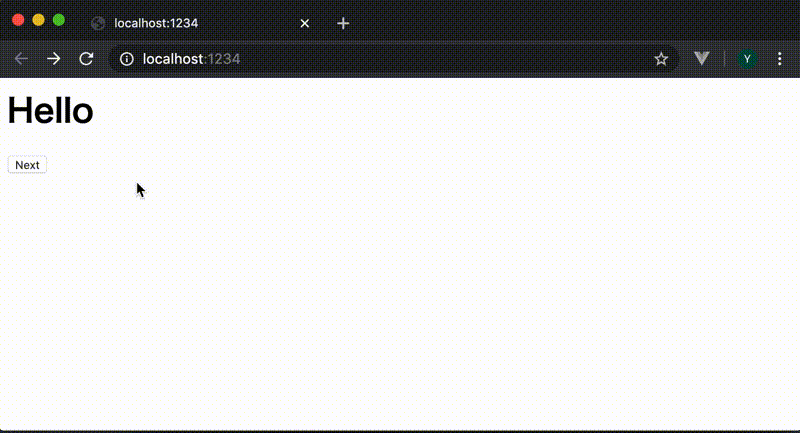概要
- ReactRouterがv5.1でHooks対応しました
- 以前 react-router + React Hooks という記事で use-react-router の使い方を紹介しました
- ですが、ReactRouter本体がHooks対応したのでこれから作る場合はこの記事のやり方で実装していくことになります
サンプルコード
- ReactRouterのHooksを使った簡単なサンプルです
mkdir react-router-with-hook
cd react-router-with-hook
yarn init -y
yarn add react react-dom react-router-dom
touch index.html index.js
index.html
<div id="root"></div>
<script src="./index.js"></script>
index.js
import React from 'react';
import ReactDOM from 'react-dom';
import {
BrowserRouter as Router,
Route,
Switch,
useParams,
useHistory,
useLocation,
} from 'react-router-dom';
function Hello() {
const history = useHistory();
return (
<div>
<h1>Hello</h1>
<button
onClick={() => history.push('/hello/react-router?message=hooks#test')}
>
Next
</button>
</div>
);
}
function HelloSomeone() {
const history = useHistory();
const location = useLocation();
const { name } = useParams();
return (
<div>
<h1>Hello {name} !</h1>
<p>pathname: {location.pathname}</p>
<p>search: {location.search}</p>
<p>hash: {location.hash}</p>
<button onClick={() => history.goBack()}>Go Back</button>
</div>
);
}
function App() {
return (
<Router>
<Switch>
<Route path="/" exact>
<Hello />
</Route>
<Route path="/hello/:name" exact>
<HelloSomeone />
</Route>
</Switch>
</Router>
);
}
ReactDOM.render(<App />, document.getElementById('root'));
- 以下のコマンドで起動します
npx parcel-bundler ./index.html
コードの説明
useHistory
- ページ遷移させるときに使う
historyを取得できますconst history = useHistory()-
history.push('/')やhistory.goBack()といった具合で使います
useLocation
- 現在のページのURLのpathやqueryなどの情報を取得できます
const location = useLocation()-
location.pathやlocation.searchといった具合で使います
useParams
- URLのパスの中で動的に変化する部分の値を取得できます
-
<Route path="/hello/:name">と定義したページにアクセスした際に -
const { name } = useParams();とすると:nameの部分の値を取得できます
-
まとめ
- Hooksで書けると昔のHOCを使った書き方より見通しがよいですね
- 一時的に使っていた
use-react-routerと若干仕様は違いますが違和感なく使えそうです
